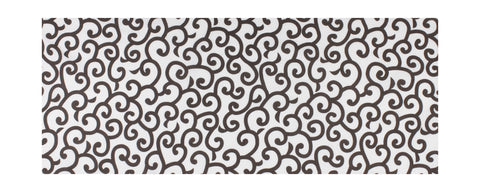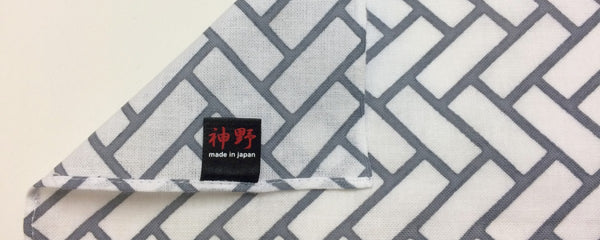"Ajiro" Lead Gray【Hand-dyed Tenugui】
¥1,800
Availability: In stock
Brand: kannojapan.com
This japanese towel is dyed using traditional hand dyeing techniques unique to Japan called "Chusen".The back side is the same design.The back side is not white.You can use it without worrying about the front and back.
»About "Chusen"
≪ Design ≫
"Ajiro" (wickerwork) pattern
As named so, the pattern uses a fishing tool as motif that was used instead of a fishing net to catch fish in the river.
The name comes from woven barks of Japanese cedar, Japanese cypress, and bamboo used to catch fish in place of a fishing net.
The pattern features characteristic alternating rectangular shapes oriented diagonally left and right. The uniquely three-dimensional shape is due to the hand-made nature of the motif.
One unique aspect is that the shape can vary greatly depending on the material. The angles in which the materials are woven are more often irregular (not right), making for a unique shape.
The pattern is used not only for kimonos, but also for house ceilings, folding screens, and more traditional items like Noh costumes from the Edo period.
Ajiro (wickerwork) made with Japanese cedar bark is called, "Higaki." The pattern is identical.
≪ Color ≫
Lead Gray (Namari-iro)
Namari-iro, literally meaning lead color, refers to a gray color, with a tinge of blue. One can see when it is melted, that lead actually has a shiny, metallic color, but the surface oxidation, gives it the dark, gray color that we associate with it.
The name has been in use after the Meiji-era (1912 onwards), and is often used in association with a melancholic, heavy mood. It is also sometimes used to describe a cloudy day, ie. 'Namari-iro no Sora.'
| Country of Manufacture | Japan |
|---|---|
| material | 100% cotton 30 count yarn used |
| weight | Approx. 35g |
| washing | When washing use a mild detergent. |

























